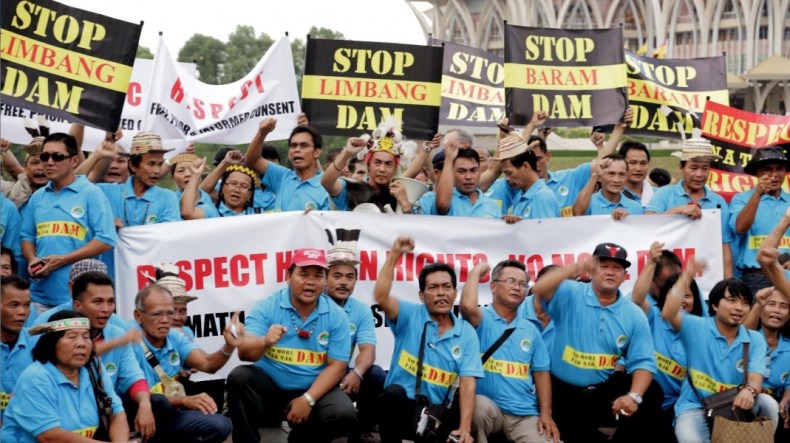March 24, 2016
A little over two years ago, in October 2013, hundreds of indigenous villagers from the little-known Baram region in Sarawak state, Malaysian Borneo, took a courageous – and some might say foolhardy – stand.
In August, their government had made an unconstitutional move to seize their land to build Baram Dam – a dam the community had successfully fought for years. Now the government was taking the first steps to extinguish the land rights of people living near the proposed dam site. Enraged and afraid, several households launched court cases to demand the government return their rights to their customary lands.
But the villagers knew that wasn’t enough.
 That October, hundreds of indigenous villagers headed to the dam site. They chased away 30 Sarawak Energy Berhad (SEB) workers who were in the forest doing geological studies for the dam. Then they set up a blockade to stop any other workers from returning.
That October, hundreds of indigenous villagers headed to the dam site. They chased away 30 Sarawak Energy Berhad (SEB) workers who were in the forest doing geological studies for the dam. Then they set up a blockade to stop any other workers from returning.
Miles away, at the small village of Long Lama on the Baram River, other villagers set up a second blockade – to prevent cement trucks and workers from constructing the access road to the Baram Dam.
The project was at a standstill. The two road blockades did their job, successfully preventing surveying work, logging and construction at the proposed location of the Baram Dam for over two years. It was an inspiring win for indigenous rights, but a tenuous one; the government attempted to use force to dispel the blockade. No one was sure how long this state of affairs would last.
To read the full article, please visit Intercontinental Cry
